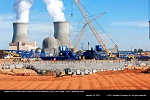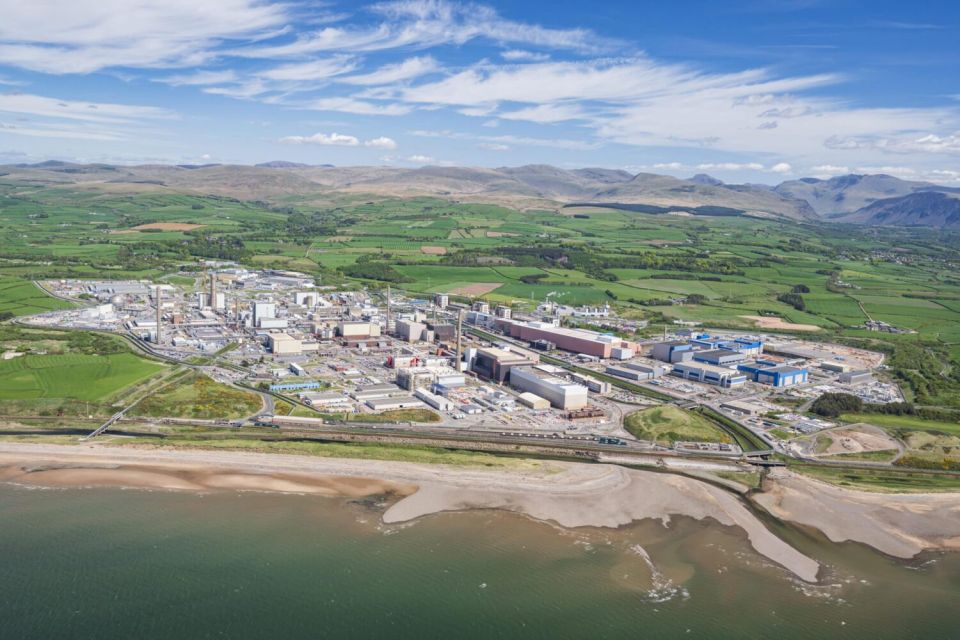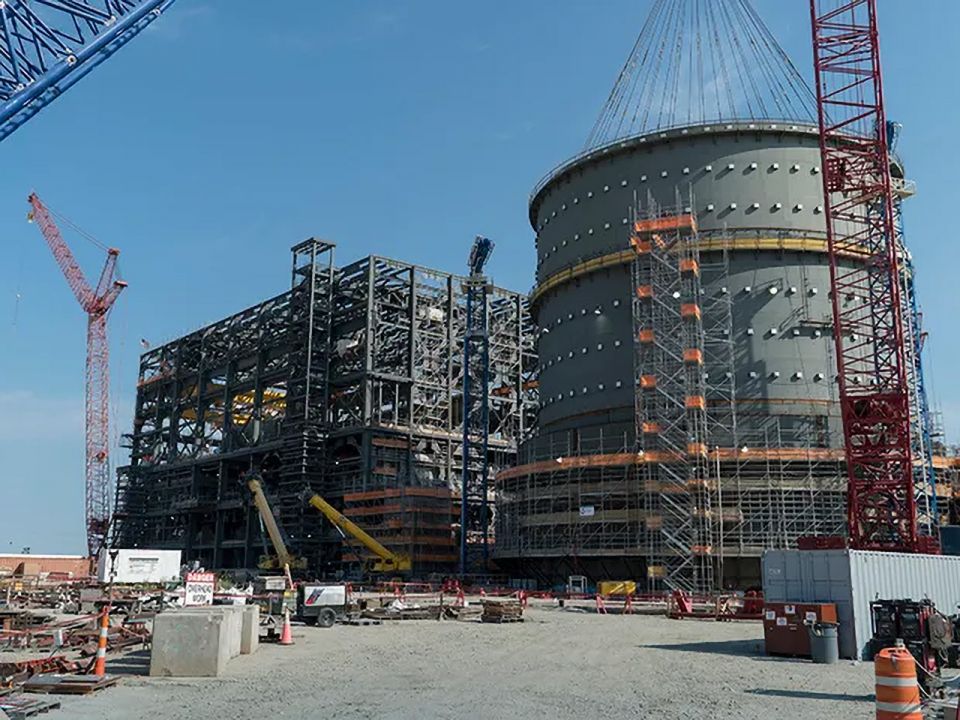Starting a new nuclear construction industry is hard work
Construction at Vogtle units 3 and 4 and VC Summer units 2 and 3 is not going as well as many nuclear advocates would like. I'm not surprised, but neither are most people who have been involved in complex construction and technology projects that involve a lot of moving parts and numerous interested parties. Nothing that happens at those projects will change my mind that atomic fission is a superior way to produce heat and boil water. There is little chance that events at those individual projects will convince me that there is something fundamentally wrong with the advanced passive reactor plant design.
 There are some important lessons that need to be shared widely so that the chances of them recurring is minimized, but it is difficult to completely eliminate the challenges that will inevitably be a part of all major construction projects. For the nuclear industry and all nuclear advocates, it is important to recognize that even if things were going perfectly, there would still be plenty of negative publicity coming from the professional opposition to what we do. We are involved in starting up a new nuclear construction industry, almost from scratch.
There are some important lessons that need to be shared widely so that the chances of them recurring is minimized, but it is difficult to completely eliminate the challenges that will inevitably be a part of all major construction projects. For the nuclear industry and all nuclear advocates, it is important to recognize that even if things were going perfectly, there would still be plenty of negative publicity coming from the professional opposition to what we do. We are involved in starting up a new nuclear construction industry, almost from scratch.
For the sake of brevity, I will put the current issues at Vogtle and Summer into three categories-backlog of design changes from the certified design, delays that were partially caused by licenses and permits whose issuance was resisted at every step of the process, and an error that resulted in laying concrete rebar that did not match the licensed standard requirements.
Licensing
Soon after the issuance of the AP1000 design certification and the associated combined operating license for Vogtle, the project leaders began the process of submitting design license amendments so that they could implement changes and refinements. Many of the requested design modifications are based on lessons learned during the construction of similar units in China. Unfortunately for the project owners, the Nuclear Regulatory Commission has no process for handling license amendments that can keep up with the needs of a construction project.
The "one step" licensing process that is described in 10 CFR 52 (CFR-Code of Federal Regulations) results in the issuance of an operating license based on a certified design. The underlying assumption by the regulators is that the design is complete and will not be changed during construction. Any changes to the design as certified need an operating license amendment.
Even if the change is an improvement, it requires a rigorous NRC evaluation and approval process designed to prevent unintended negative consequences directly affecting reactor safety. The operating license amendment process is quite different from the one used to process changes when the owners build based on a construction permit and request their operating license after completing construction and low power testing.
The problem with one step licensing is that it is a poor assumption to believe that it is possible to build first-of-a-kind (FOAK) construction projects without making any changes to a design that was completely conceived on paper and inside computers. Reality often does not match models. In addition, construction codes and standards are continuously evolving; even though the process is slow, there are inevitably going to be changes that might affect a design that was first submitted for certification 10 years before construction actually started.
The backlog of potential changes for Vogtle and Summer developed because the leaders were understandably reluctant to submit any changes while the design certification work was still in progress. There is not much that the project leaders can do at this point other than to be even more reluctant than they already are to accept any suggestions that would require a license amendment.
With the clarity made possible by hindsight, the Part 52 one-step licensing process might not be the best choice for any FOAK nuclear power plant, even if similar units have been built outside of the United States. US licensing requirements are different enough to require what is essentially a new design and a different construction process.
The opposition's strategy: delay
It is hard for nuclear advocates to fail to notice that the organized opposition-which did everything in its power to slow the licensing and permitting processes required for Vogtle and Summer-are engaging in "I told you so" crowing about the high cost of new nuclear plant construction. Every story about a potential cost overrun is accompanied by quotes from groups like Southern Alliance for Clean Energy and Arjun Makhijani's Institute for Energy and Environmental Research. (Note: Makhijani is famous for fantasizing about a carbon free, nuclear free energy supply.)
Arjun Makhijani, the president of the Institute for Energy and Environmental Research, said efforts to rush such a complex project to completion set the scene for delays and rising costs."The cost increase should not be a surprise; rather it is déjà vu all over again," he said. "It would be much better if construction were suspended until all design issues were resolved."
(Source: Augusta Chronicle (May 11, 2012) Price of Vogtle expansion could increase $900 million)
There is no secret to the opposition's recipe for making any construction project excessively costly. All they have to do is to force schedule delays and costs inevitably increase due to financing, idle labor, labor force reconstitution, issues associated with supply chains, and inflation. Project managers are rarely applauded for missing deadlines, even if they adhere to a carefully prepared, logical schedule that gets pushed to the right (on a timeline) by external forces. Once delays have been imposed, costs will increase again if efforts are made to revise schedules and accelerate work to attempt to get back on schedule.
Supply chain issues are especially difficult to explain to people who have not worked in an industrial setting. When the parts that are needed are large and custom made, they need to be ordered months to years in advance. Once those parts are finished, the manufacturer needs to ship or needs to get paid for storage.
If the parts require special environmental controls to ensure that they do not deteriorate, storage charges increase dramatically. Suppliers who have to delay order shipments or who receive purchase orders several months after they expected the orders to arrive become more reluctant to do business. (That means that they start negotiations for the next order at a higher unit price.) Suppliers also logically delay investing in production capacity until after the orders-and the associated payments-actually arrive.
Rebar
The final current issue associated with Vogtle and Summer is a specific error that resulted in rebar (reinforcement bars of steel that strengthen concrete) being laid at both projects that did not match the concrete standard that was included as part of the certified design. Correcting the error will result in a several month delay at both projects while rebar is removed, new rebar is cut and the new rebar is laid. No concrete can be poured before that happens and there are many steps in the construction process that cannot take place until the concrete is in place. Management is going to be distracted.
The source of the error has not been determined and the results of the investigation may never be made public. What seems to have happened is that someone or some group on the project team decided to use a reinforced concrete standard that was updated after the license was approved. That standard specified a different rebar configuration. The design change was prepared, but never approved by the NRC. Somehow, the rebar was installed to the newer standard even though the license amendment had not been approved. I suspect that there was a communications breakdown that prevented the installers in the field from knowing the exact status of the design. It might have been as simple as a drawing or specification that specified a standard without specifying the exact revision of the standard.
It is going to be an expensive lesson. It is one that can be avoided by projects that have not yet begun construction. In nuclear construction projects, effective change control and effective communications plans are essential.
Reviving a slumbering giant of an industry is hard work. There will be plenty of successes to celebrate, but I would not be a "nuke" if I did not seek to learn as much as possible from the difficulties experienced by others and if I did not seek to document those lessons so that others can also avoid making the same errors. That is part of our learning culture.
_____________________________

- Adams






